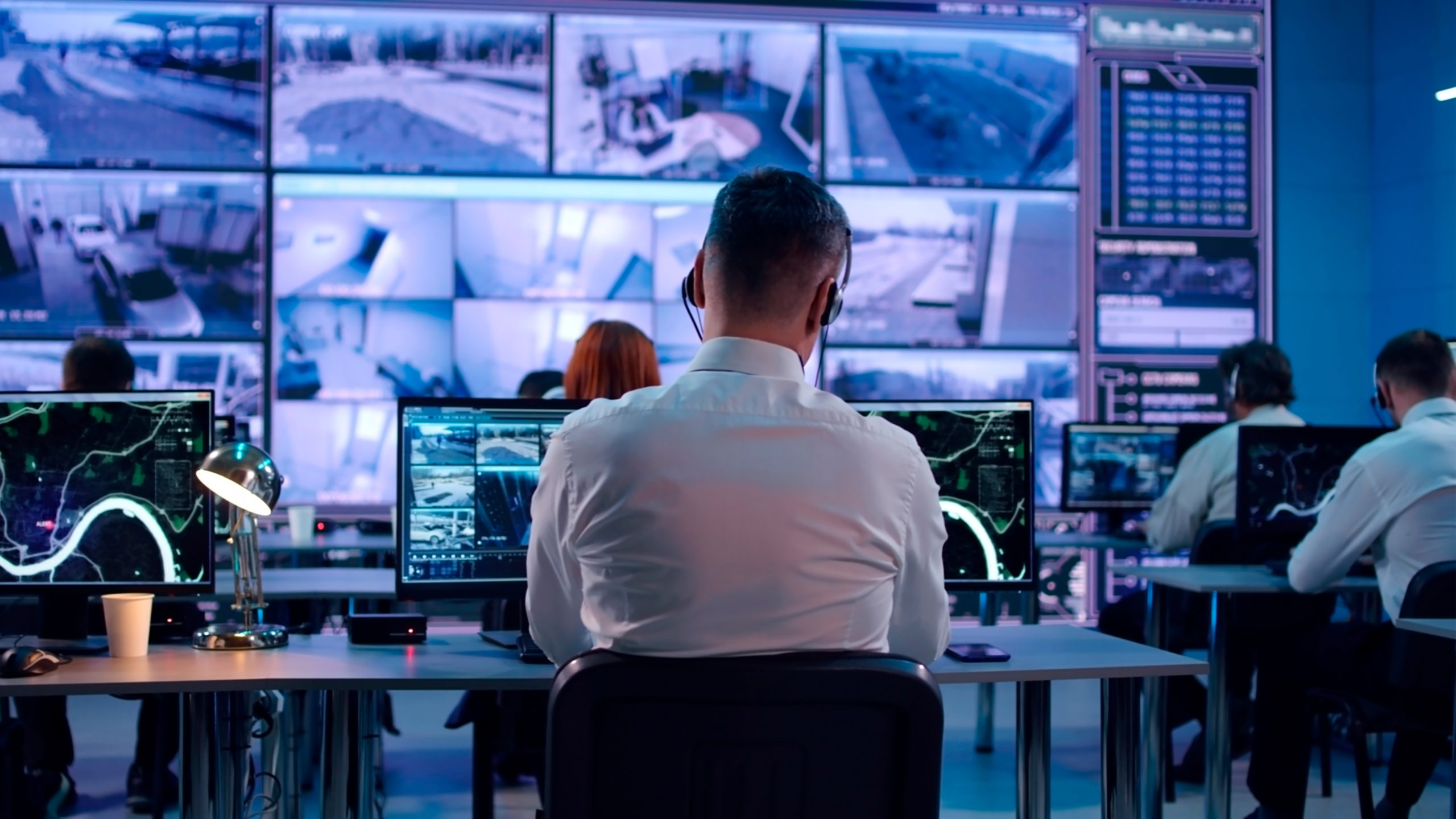Our experience spans two dedicated websites.
Discover the world of Collaborative and Meeting Spaces:
Discover the world of Collaborative and Meeting Spaces:
Last update: 27/05/25
A command centre is a place used to provide centralised command and connected to many human or machine sources. It is organised to collect, process, analyse, display and distribute planning and operational data. It helps organisations to maintain remote control of a process or activity.
Although often considered a military facility, the command centre can also be used by other institutions or companies.
This is a more organised and defined version of the crisis room. Both the hierarchical structure and the top-down instructions to the field and the control room are predefined by scenarios that can be standard. In this article, discover the advantages of a command centre, and find organisational and technical advice for its implementation.
Depending on your objectives and the industry in which you operate, a command centre can have several advantages, such as:
Sensors, cameras, the internet of things, social networks, electronic media, … the incoming sources for a decision maker can be very numerous. To manage this continuous flow of information and data, a space with dedicated tools is needed to collect, sort, analyse and finally decide on the actions to be taken.
In the event of an incident, you can use your command centre to visualise the critical area(s) and their surroundings, and also broadcast emergency messages or notifications (such as alarms) to ensure the safety of people and property.
Command centres have equipment that makes it possible to control several situations at the same time. Not only do these systems make it possible to identify possible threats, but they are also a good way of locating important resources and managing them in real time in an optimised manner.
A command centre can bring together people with different skills around complex and heterogeneous data. A video wall displays relevant information in an accessible place where everyone can see and interpret it.
One of the keys to designing a command centre is to ensure that you meticulously plan the usage scenarios before you start designing. An important part of planning is asking the right questions in advance, such as:
Let’s start with visual information. Often a video wall is the primary means of viewing video and data coming into the command centre.
Choosing the right video wall depends on many variables, including room layout, wall space, lighting, total number and types of input sources, alarm scenarios, distance and viewing configurations.
This information allows an AV integrator like Motilde to determine technical elements such as screen and bezel size, aspect ratio, pixel density and all the constraints necessary to define the technology and features of the video wall.
The solutions for organising and displaying incoming data are generally of the server or video controller type for the hardware part. If there is a strong need for security and confidentiality, solutions based on video connections rather than network connections are preferred.
For the software part, VMS (Video Management System) or SCADA for industry are often added to the business software.
Next, you will need to determine the type of communications that will enter and leave the command and control centre, such as fire service or other government agency radio, VOIP/POTS telephone, satellite communications or video conferencing. You also need to know whether or not you need to cross-connect or ensure interoperability between all of these communication methods.
It is important that operators are comfortable during long shifts. Your 24/7 chairs should therefore be ergonomically designed. Sustained comfort is important because command centre operators generally have fewer opportunities to take breaks than other employees, and the ergonomics of a control room are a factor in the performance of that space.
In the energy business, transactions are made or broken in seconds. Clear, accurate and immediate visual access to all information provides a competitive advantage in international business and protects assets and employees from risk. For the service sector such as aviation, rail, traffic, shipping, transport and factories – any sector where the movement of people or products is required; effective command and control scenarios are essential.
Whether your project is at the design or implementation stage, don’t hesitate to ask Motilde for their expertise. We will be delighted to discuss your future operational space: control, supervision, crisis, or command.

Copyright © 2025. MOTILDE. All rights reserved.